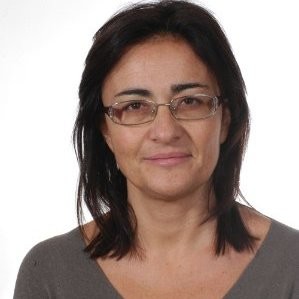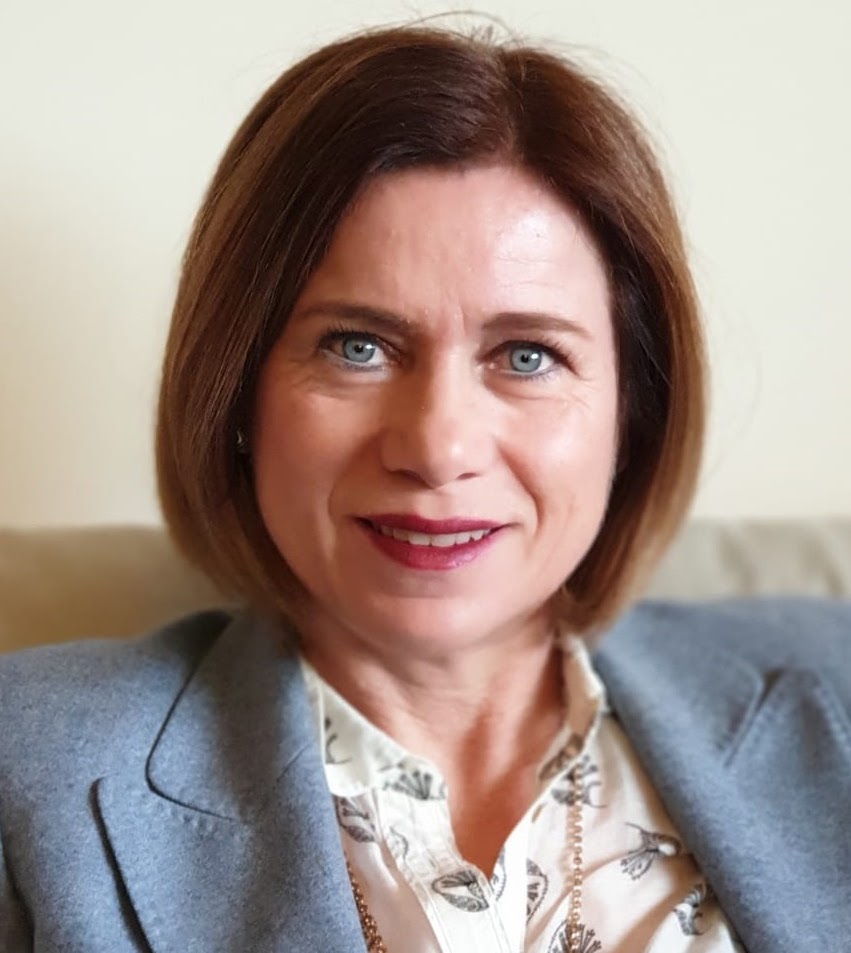16/Apr/2024 11:30 - 13:00
room A101, Povo 1
Round Table: “A hyperconnected world: present and future of global connectivity”
Three scientists discuss next-generation telecommunications networks and services at the ICT Days round table!
From space to terrestrial networks, to the Internet of Everything, to federated AI models and beyond, join and explore with us the challenges and opportunities that shape the present and future of global connectivity. You will connect with industry experts on aspects of technology and innovation, presented in a rigorous but accessible language to all interested (or just curious) participants.
Moderator: Giovanna Varni, Associate professor at the Department of Information Engineering and Computer Science, University of Trento
How to participate
The event will be held in Italian. For further details about registration, please check out the Italian webpage.
Our Speakers

Ernestina Cianca is Associate Professor in Telecommunications at the URTV (Dept. of Electronics Engineering) at University of Rome “Tor Vergata”, where she teaches Digital Communications and Internet of Things- Principles and Applications. She is Director of the II Level Master in Engineering and International Space Law in Satellite systems for Communication, Navigation and Sensing; vice-director of the Interdepartmental Research Center for TeleInFrastructures, CTIF-Italy.
Her research mainly concerns wireless access technologies (CDMA and MIMO-OFDM-based systems), in particular, Radio Resource Management at PHY/MAC layer, integration of terrestrial and satellite systems, short-range communications in biomedical applications.
Il Ruolo dei Satelliti per la connettività globale: presente e sfide future
The so-called Space Economy represents one of the most promising direction of evolution of the world economy in the next years. In the past few years, a shift has occurred from a mainly governmental use of the space to a private and commercial use: space tourism, mega-constellations for broadband services, Low Earth Orbit (LEO) constellations for Internet of Things (IoT) services or to improve the navigation services. Terrestrial operators have finally recognized the important role of satellites in the future 6th generation communication networks (6G) and the integration with terrestrial and non terrestrial networks, including satellites, is under 3GPP standardization. However, satellites will not only be an important part of the future telecommunication infrastructure, but of a global infrastructure able to provide integrated communication/navigation and sensing services. The presentation will highlight the main steps of this evolution, also outlining the related open challenges, focusing on the challenge of long-term space sustainability. As a matter of fact, such evolution has occurred in an uncontrolled and unregulated way. Nowadays space is extremely congested and soon it will no longer be a safe place to provide commercial or governmental services. The issue of a sustainable use of space and its protection has become very urgent.

Francesca Cuomo is Full Professor at DIET, Department of Information Engineering, Electronics and Telecommunications ay Sapienza University of Rome teaching courses in Telecommunication Networks. Her current research interests focus on: Vehicular networks and Sensor networks, Low Power Wide Area Networks and IoT, 5G Networks, Multimedia Networking, Energy saving in the Internet and in the wireless system.
Evoluzione dell’Internet of Things e nuove applicazioni per le Smart Cities
The Internet of Things (IoT) represents one of the revolutions in telecommunications networks. The IoT is an interconnected network of physical devices that integrate sensors, software and other technologies, which allow them to collect and exchange data across the Internet. These devices can be diverse: from simple environmental sensors to smart home appliances and automated industrial plants or interconnected vehicles. Their applications are diverse and range across multiple sectors, including agriculture, healthcare, automotive, energy, transportation and Smart Cities.
The seminar will discuss this technology and the new solutions that emerge, thanks to the use of LPWANs (Low-Power Wide-Area Networks) which offer efficient connectivity with low energy consumption, ideal for large-scale distributed IoT devices. These networks provide a robust infrastructure for interconnecting smart devices in a Smart City, enabling the collection and analysis of crucial data to improve operational efficiency and quality of life.
Smart Cities fully exploit the potential of the IoT to address complex urban challenges. For example, environmental monitoring systems based on IoT sensors enable the real-time assessment of air quality and waste management, allowing timely interventions to improve environmental sustainability. Moreover, the IoT underpins innovative solutions for urban mobility, such as intelligent traffic management and automated parking, reducing congestion and travel times.
However, the widespread adoption of IoT in Smart Cities poses unique challenges, such as data security and user privacy. It is crucial to develop robust policies and protocols to protect sensitive information and ensure responsible use of IoT technologies.

Chiara Boldrini is a Senior Researcher in the Ubiquitous Internet group at CNR’s Institute of Informatics and Telematics, in Pisa.
Her research interests include human-centric decentralized AI, computational social science and social computing, social-aware mobile and ubiquitous systems.
Human-centric decentralized AI at the Internet edge
In the dynamic landscape of edge computing, where devices are ubiquitous and resources limited, traditional centralized approaches to AI face significant hurdles. Enter Federated Learning (FL), a first attempt to empower the edge and preserve data privacy in this distributed environment. However, as we delve deeper into highly pervasive edge scenarios, the limitations of central coordination become apparent, and the network’s complexity unfolds. From unpredictable connectivity to data and device heterogeneity, the challenges are manifold. A potential solution emerges: Decentralized Federated Learning (DFL). In DFL, there is no central coordination for the learning process, and each device can communicate only with a subset of all devices on a communication graph. This graph’s topology cannot be predetermined or designed in advance, reflecting the conditions of a realistic edge environment abundant with devices. In this talk, we will explore the challenges of Decentralized Federated Learning and delve into the opportunities presented by leveraging AI at the edge of the Internet.

